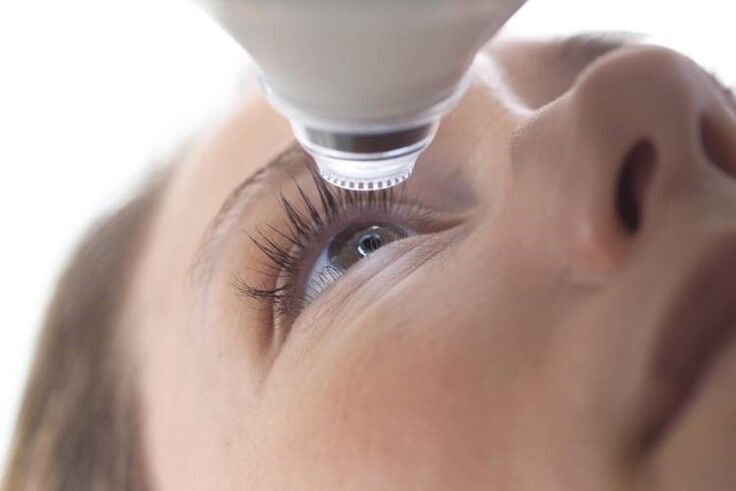Diseases of the visual system are well suited for correction, but if the disease is neglected or conservative therapy does not produce the desired results, surgery is recommended to restore vision. It makes it possible to eliminate the pathological processes of the visual system, to preserve its functionality, and to eliminate the possible consequences of the disease.
Modern ophthalmology offers a number of effective methods for restoring the functioning of the optical system, but before considering the types of eye surgeries, it is important to know the indications for their performance as well as the possible consequences.

When is vision rehabilitation surgery needed?
Surgery to restore vision in ophthalmology falls into the category of refractive surgery. The main goal of such treatment is not only to maintain the functioning of the visual system, but also to reduce dependence on contact lenses and glasses. The main indications for surgery are several diseases:
- Gray cataract;
- glaucoma;
- keratoconus;
- myopia;
- strabismus;
- retinal atrophy;
- lens replacement;
- eye injury.
All of these diseases can be treated without surgery, but only if there are no irreversible pathological processes in the structures of the visual system.
Types of operations
There are several methods for restoring vision through surgical treatment. Each has its advantages and disadvantages, but these are sometimes seen as the only way to keep the visual system functioning. Consider the most effective types of surgery to restore vision.
Laser correction
In modern ophthalmology, laser vision correction is considered a "gold standard" that allows vision to be restored with minimal risk and consequences. Such manipulations are performed using state-of-the-art equipment that allows high-precision correction of optical system errors. Indications for laser vision correction are myopia, hyperopia, and astigmatism. All of these pathologies are united by the general term "ametropia, " which means diseases associated with focusing the eye. There are several types of laser correction:
LASEK. The procedure is performed with a thin cornea and the laser beam itself only affects the upper layers of the eye. During surgery, a valve is formed from the epithelium and membrane and then fixed with soft lenses, which are removed after a few days. This type of surgery takes 5-7 minutes and the effect of the treatment is not visible on the 4th day after surgery. LASEK laser vision correction is considered to be the only method that can be used in children.
LASIK. It is the basic operation of restoring vision, allowing you to get rid of myopia of varying complexity as well as the initial stages of astigmatism. During the surgery, the laser beam penetrates the deep layers of the eyeball, changing the shape of the surface layer of the cornea and eliminating defects in the deep structures. The duration of surgery does not exceed 15 minutes in each eye. The disadvantage of such operations is that they cannot predict the characteristics of the anatomy of the patient's eye.
The operation with the laser vision correction method is very effective, but even with a good quality procedure, the visual acuity may decrease over time, which will be an indication of re-correction.

Vitrectomy
Vitrectomy is performed when complete or partial removal of the vitreous of the eyeball is required. The procedure is performed under general anesthesia. The operation can take up to 3 hours. During the surgery, a small puncture is made in the eye socket, through which the necessary manipulations are performed.
The main indication for surgery is the restoration of vision after bleeding or age-related retinal detachment. Complications after surgery are possible in the form of corneal edema, increased intracranial pressure, or even greater loss of vision. The prognosis after surgery depends on a number of factors, especially the extent of the pathological process, the type of prosthesis used to replace the vitreous. In the case of irreversible damage to the optic nerve, the effect of surgery is lacking.
Scleroplasty
Ophthalmic surgery to strengthen the outer skin (sclera). It is not used to correct vision but to normalize the rate of myopia in at-risk patients. The scleroplasty procedure is often performed in adolescents because the shape of the eye changes during this period.
During surgery, special wings are placed behind the back wall of the eyeball to strengthen the sclera. Polymers or biological components are more commonly used. After a while, adhesions appear at the injection site, and after a few months, blood vessels grow in the lobe, which continues to support the work of the visual system.
Lens replacement
Such an operation is performed by clouding the lens or other degenerative processes. The most common sign of appointment is cataract, cataract. The surgical procedure is quite difficult, the implant is selected individually to suit the gender, age and other characteristics of the patient.
The lens is replaced under local anesthesia. During the surgery, the doctor makes a small incision with a laser, then liquefies the patient's lens with a special device and then removes it from the eye. After the procedure, the prepared graft is implanted. The surgery lasts up to 30 minutes, then sutures are applied, the patient stays in the clinic for several hours and then goes home.
Complications after such surgery are extremely rare. This is often followed by laser vision correction.
Keratoplasty (corneal replacement)
This type of operation is quite complex and requires a high level of professionalism on the part of the surgeon. Indication of its implementation is the treatment of congenital and acquired disorders which have manifested as a result of injuries or which have become the consequences of certain diseases.
The duration of the operation does not exceed 30 minutes. During the course, the doctor will remove a portion of the cornea with a laser or scalpel and replace it with donor tissue. The stitches are stored for about a year after surgery and then special lenses are chosen to reduce the risk of infection. The healing period lasts up to 4 weeks and consists of regular eye drops with antiseptic drops.
Crosslinking
It is prescribed for various diseases of the cornea, allowing the ligaments and other fibers of the corneal tissues to be strengthened with dystrophy or keratoconus. In the process, local anesthesia is used, then a part of the cornea is cut off with a special device, vitamin B2 is instilled in and irradiation is carried out, which allows the tissue to be strengthened by more than 200%.
For the first time after surgery, the patient wears protective lenses and visits an ophthalmologist regularly. If the surgery is successful, the effect lasts for 10 years.
Laser coagulation of the retina
Surgical procedure to restore retinal tissue. In 70% of cases, the procedure produces positive results and the patient himself has the opportunity to return to his normal lifestyle after one day. The surgery is performed under local anesthesia, while the duration of the procedure does not exceed 20 minutes.
Before surgery, drops are instilled into the eyes to dilate the pupils, and protective lenses are placed through which the laser beam passes. Due to the high temperature, the damaged cells and small blood vessels stick together.
Indications for the appointment of such manipulation are retinal diseases or tumor-like processes. In some cases, laser coagulation of the retina results in inflammation and clouding of the lens, which requires further treatment.

How to prepare
When referring to surgical treatment, the doctor prescribes a series of tests to the patient, giving useful recommendations for preparing for a particular procedure to eliminate a vision defect:
- You should stop wearing glasses and contact lenses one week before surgery.
- Pass all required tests and pass the required diagnostics.
- Do not drink alcohol for 3-4 days.
- Rejection of cosmetics.
- Good rest, good sleep.
In addition to strong excitement, you may also take a mild sedative on medical advice.
Postoperative period
Before performing a vision recovery operation, the ophthalmologist introduces the patient to the rules of preparation, and the postoperative period is also an important stage. Following a number of rules will significantly reduce the risk of complications after any surgery and increase the prognosis for successful recovery:
- You need to sleep on your back for the first 2 days.
- Rubbing the eyes or using cosmetics is prohibited in the early postoperative period.
- Wash your hands thoroughly before using eye drops.
- Wash your face with boiled and warm water, do not get in your eyes.
- Avoid watching TV for a long time or interrupting it in front of your computer.
- Postpone planning your pregnancy for a few months.
- In the first months, it excludes strenuous physical effort, trips to the solarium, swimming pool or sauna.
- Avoid prolonged exposure to sunlight.
- Avoid alcohol and smoking.
- Proper and healthy eating.
After any operation to restore vision, a regular visit to the ophthalmologist should be performed, the necessary tests should be performed, and prescribed medications should be used. Adherence to all rules will help minimize the risk of possible complications, improve vision and overall well-being.
findings
Vision recovery operations are performed when other treatments have not produced the desired effect or the disease is running. Therefore, in order to prevent a severe stage of ophthalmic disease, you should visit an ophthalmologist regularly and perform the necessary treatment. After all, the earlier the disease is diagnosed, the better the prognosis for recovery.























